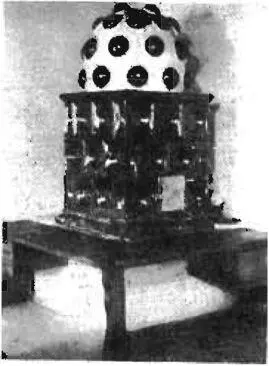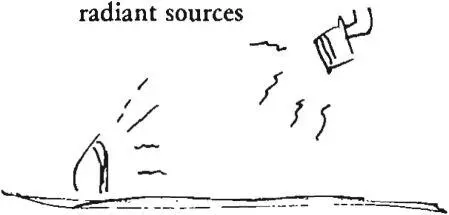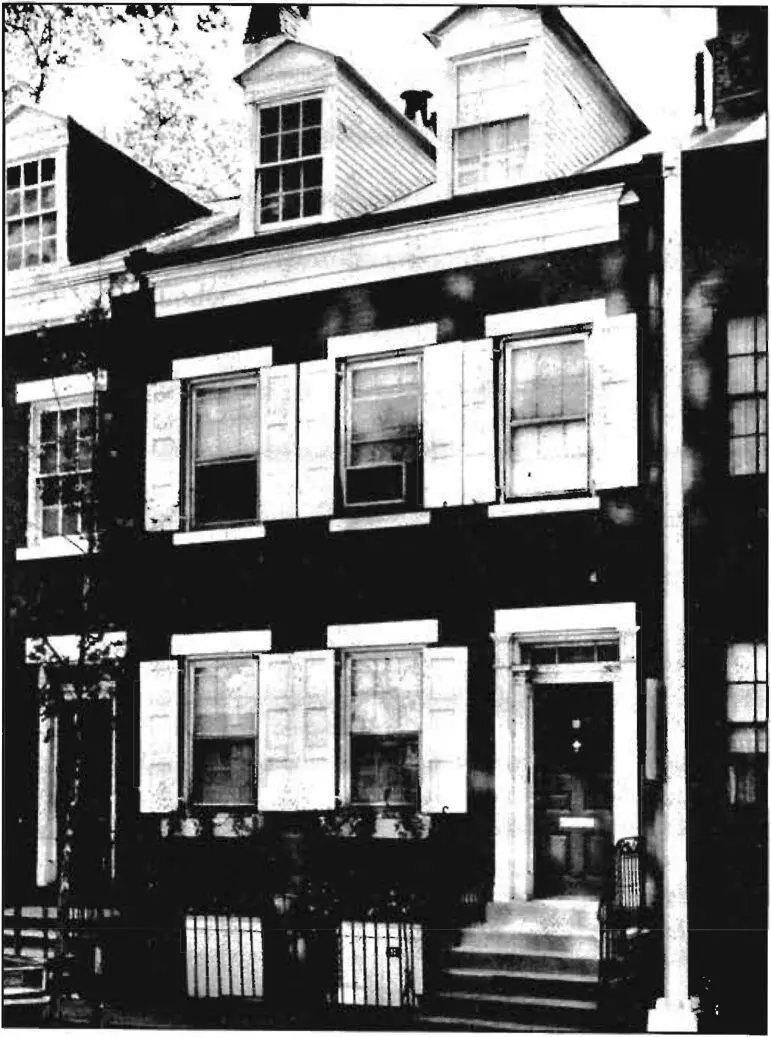Christopher alexander - A pattern language
Здесь есть возможность читать онлайн «Christopher alexander - A pattern language» весь текст электронной книги совершенно бесплатно (целиком полную версию без сокращений). В некоторых случаях можно слушать аудио, скачать через торрент в формате fb2 и присутствует краткое содержание. Жанр: Прочая научная литература, на английском языке. Описание произведения, (предисловие) а так же отзывы посетителей доступны на портале библиотеки ЛибКат.
- Название:A pattern language
- Автор:
- Жанр:
- Год:неизвестен
- ISBN:нет данных
- Рейтинг книги:3 / 5. Голосов: 1
-
Избранное:Добавить в избранное
- Отзывы:
-
Ваша оценка:
- 60
- 1
- 2
- 3
- 4
- 5
A pattern language: краткое содержание, описание и аннотация
Предлагаем к чтению аннотацию, описание, краткое содержание или предисловие (зависит от того, что написал сам автор книги «A pattern language»). Если вы не нашли необходимую информацию о книге — напишите в комментариях, мы постараемся отыскать её.
A pattern language — читать онлайн бесплатно полную книгу (весь текст) целиком
Ниже представлен текст книги, разбитый по страницам. Система сохранения места последней прочитанной страницы, позволяет с удобством читать онлайн бесплатно книгу «A pattern language», без необходимости каждый раз заново искать на чём Вы остановились. Поставьте закладку, и сможете в любой момент перейти на страницу, на которой закончили чтение.
Интервал:
Закладка:
We propose that all the services be located together and run around the ceiling of each room in the spandrel between the vaulted ceiling and the floor above—floor-ceiling vaults (219).
Heating and electrical conduits will be universal throughout the building and should thus be run around every room. Plumbing and gas lines will be around some rooms only. All lines will also be concentrated vertically at the corners of rooms. Thus the lines form vertical trunks from which horizontal loops spring. This configuration of pipes and conduits is easy to understand and plug into.

Therefore:
Make ducts to carry hot air conduit, plumbing, gas, and other services in the triangular space, within the vault, around the upper edge of every room. Connect the ducts for different rooms by vertical ducts, in special chases, in the corners of rooms. Build outlets and panels at intervals along the duct for access to the conduits.
wall-ceiling triangle
 |
| *J* |
Once the duct is in, you can fill up the triangle with lightweight concrete—floor-ceiling vaults (219). Place heating panels along the surface of the triangle—radiant heat (230) ; and place outlets for lights at frequent intervals below the duct, with leads and conduits running down in rebates along the window frames—pools of light (252). . . .
23O RADIANT HEAT*
. . . to complete wall membranes (218), floor-ceiling vaults (219) and duct space (229), use a biologically sensible heating system.
This pattern is a biologically precise formulation of the intuition that sunlight and a hot blazing fire are the best kinds of heat.
Heat can be transmitted by radiation (heat waves across empty space), convection (flow in air or liquids by mixing of molecules and hot air rising), and conduction (flow through a solid).
In most places, we get heat in all three ways from our environment: conducted heat from the solids we touch, convected heat in the air around us, and radiated heat from those sources of radiation in our line of sight.
Of the three, conducted heat is trivial, since any surface hot enough to conduct heat to us directly is too hot for comfort. As far as the other two are concerned—convected heat and radiant heat—we may ask whether there is any biological difference in their effects on human beings. In fact there is.
It turns out that people are most comfortable when they receive radiant heat at a slightly higher temperature than the temperature of the air around them. The two most primitive examples of this situation are: (i) Outdoors, on a spring day when the air is not too hot but the sun is shining. (2) Around an open fire, on a cool evening.
Most people will recognize intuitively that these are two unusually comfortable situations. And in view of the fact that we evolved as organisms in the open air, with plenty of sun, it is not surprising that this condition happens to be so comfortable for us. It is built into our systems, biologically.
Unfortunately, it haffens that many of the most widely used-heating systems ignore this basic fact.
Hot air systems, and buried pipes, and the so-called hot water “radiators” do transmit some of their heat to us by means of radiation, but most of the heat we get from them comes from convection. The air gets heated and warms us as it swirls around us. But, as it does so it creates that very uncomfortable stuffy, over-heated, dry sensation. When convection heaters are warm enough to heat us we feel stifled. If we turn the heat down, it gets too cold.
The conditions in which people feel most comfortable require a subtle balance of convected heat and radiant heat. Experiments have established that the most comfortable balance between the two, occurs when the average radiant temperature is about two degrees higher than the ambient temperature. To get the average radiant temperature in a room, we measure the temperature of all the visible surfaces in a room, multiply the area of each surface by its temperature, add these up, and divide by the total area. For comfort, this average radiant temperature needs to be about two degrees higher than the air temperature.
Since some of the surfaces in a room (windows and outside walls), will usually be cooler than the indoor air temperature, this means that at least some surfaces must be considerably warmer to get the average up.
An open fire, which has a small area of very high temperature, creates this condition in a cool room. The beautiful Austrian and Swedish tiled stoves also do it very well. They are massive stoves, made of clay bricks or tiles, with a tiny furnace
 |
| Austrian tiled stove. |
IO79
in the middle. A handful of twigs in the furnace give all their heat to the clay of the stove itself, and this clay, like the earth, keeps this heat and radiates it slowly over a period of many hours.
Radiant panels, with individual room control, and infrared heaters hung from walls and ceilings, are possible high technology sources of radiant heat. It is possible that sources of low-grade radiant heat—like a hot water tank—might also work to very much the same effect. Instead of insulating the tank, it might be an excellent source of radiant heat, right in the center of the house.
Therefore:
Choose a way of heating your space—especially those rooms where people are going to gather when it is cold— that is essentially a radiative process, where the heat comes more from radiation than convection.
 |
| surfaces slightly warmer than air |
If you have followed earlier patterns, you may have rooms which have a vaulted ceiling, with a steeply sloping surface close to the wall, and with the major ducts behind that surface— floor-ceiling vaults (219), duct space (229). In this case, it is natural to put the radiant heating panels on that sloping surface.
But it is also very wonderful to make at least some part of the radiant surfaces low enough so that seats can be built round them and against them; on a cold day there is nothing better than a seat against a warm stove— built-in seats(202). . . .
1080
| 231 DORMER WINDOWS* |
|---|
 |
108 I
. . . this pattern helps to complete sheltering roof (i 17). If you have followed sheltering roof, your roof has living space within it: and it must therefore have windows in it, to bring light into the roof. This pattern is a special kind of window place (180), which completes the roof vaults (220), in these situations.
We know from our discussion ofsheltering roof (117) that the top story of the building should be right inside the roof, surrounded by it.
Интервал:
Закладка:
Похожие книги на «A pattern language»
Представляем Вашему вниманию похожие книги на «A pattern language» списком для выбора. Мы отобрали схожую по названию и смыслу литературу в надежде предоставить читателям больше вариантов отыскать новые, интересные, ещё непрочитанные произведения.
Обсуждение, отзывы о книге «A pattern language» и просто собственные мнения читателей. Оставьте ваши комментарии, напишите, что Вы думаете о произведении, его смысле или главных героях. Укажите что конкретно понравилось, а что нет, и почему Вы так считаете.












